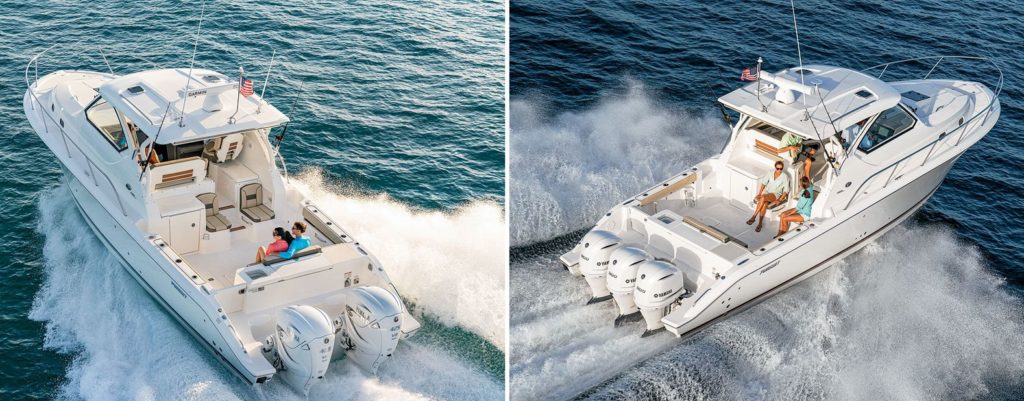By Jim Hendricks.
Outboard-powered cruisers have never been more prevalent than they are today, owing largely to the growth of outboard motors themselves. The Yamaha 425 XTO Offshore V-8, for example, stands near the pinnacle of available outboard oomph and technology, and is well-suited for boats such as the Pursuit OS 355, which serves as both a capable cruiser and an offshore fishing machine.
A pair of 425s could supplant a trio of Yamaha F300 V-6s on the transom of the OS 355 (with a dry weight without power of about 15,770 pounds and a maximum horsepower rating of 900), and reduce the rigging, complexity, maintenance and drag created by the propulsion system. Yet how do these two outboard configurations compare in real-life performance?
“We wanted to know the answer,” says Chris Gratz, director of engineering for Pursuit Boats. “So, we decided to compare performance data for two OS 355s, one with twin Yamaha 425 XTOs and another with triple F300s.” Both boats were propped by Pursuit for optimum performance, the 425s sporting 17-inch-pitch Yamaha XTO three-blade stainless-steel wheels, while the F300 spun 18-inch Yamaha Saltwater Series II three-blade stainless props.
We should point out that these trials took place on different days under different sea and atmospheric conditions, variables that may account for some differences in performance.
READ MORE at boatingmag.com

